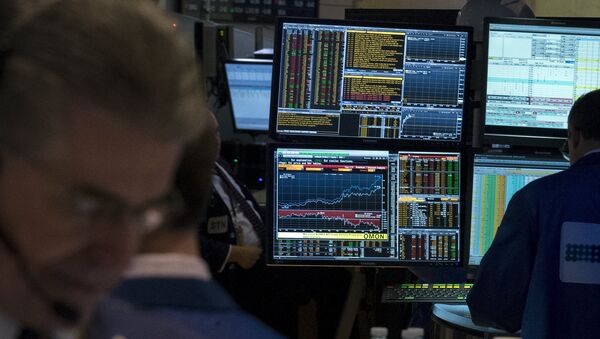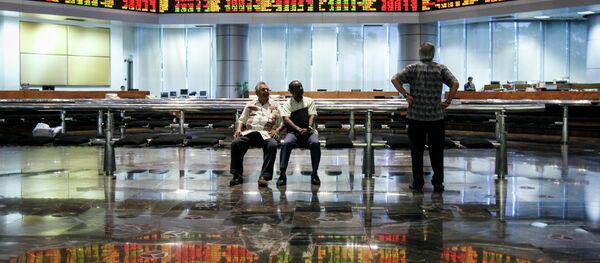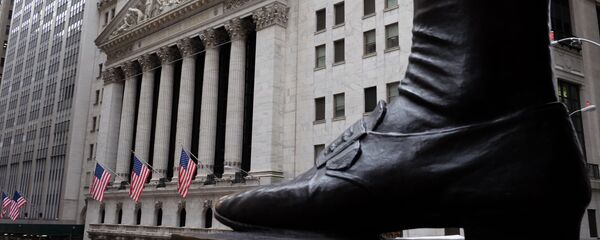Kristian Rouz — Yet another set of frustrating US macro data released Friday, including the decline in consumer confidence, has made a looming US Fed interest hike a more distant perspective. Stock markets expanded slightly in response to the anticipated prolonged period of cheaper dollar liquidity. Meanwhile, US bond market followed the European fixed-income trend of the previous day, stabilizing with Treasury yields lower and a rebound in value. A decline in US manufacturing indicated the Q2 economic expansion is likely to miss expectations. The overall market sentiment depressed currencies market with the greenback declining against the euro to its three-months lowest.
The S&P 500 Index posted its highest on the record second straight day at the close in New York due to traders' and investors' shared understanding that the US Fed would now have to take more time before the planned hike in its base interest rate due to softer data. A decline in consumer confidence and a weaker-than-expected manufacturing performance in April — weather conditions no more the reason — indicate the US economy still requires the ultra-cheap credit; otherwise it could easily clip into another recession. At this point, the painful though necessary return to the macroeconomic normality would ruin the whole economic doctrine of the Obama administration, meaning measures of monetary tightening are most likely to face another protraction.
The dismal data came to an unpleasant surprise of most market participants, and stock gains could have been bigger had not the economy been staggering. "The rest of the economy's not breaking out, so how can the market?" Warren West of the Philadelphia-based Greentree Brokerage Services said.
Industrial production came to a halt in April, even shrinking some 0.3%, a governmental report stated, after a mere 0.3% expansion the previous month. This means the expansion in US real economy is not sustainable enough to wear the harshness of a more expensive credit and limiter liquidity supply that usually accompany higher base interest.
Manufacturing accounts for some 12% of US economy, and even though the dollar is on the losing streak, the exports are unlikely to drive industrial production the way it used to; the whole sector is now rearranging its growth structure.
US consumer sentiment gauge, measured by the University of Michigan, fell to 88.6 early in May, its lowest since October, from the reading of 95.6 a month ago. A slide in automobile and housing purchases was the main factor of the decline in consumer sentiment, biggest in over two years.
The reasons the US economy is now stagnating in spurs are port disruptions and the related union activity, a stronger dollar and softer corporate earnings, along with the energy firms' investment austerity. The positive effects of the shale boom have been nearly erased by the lower crude prices during the past six months, and the underinvestment is starting to weigh on productivity across several sectors of the US economy. A decline in US government's investment is also a big factor of a milder economic expansion.
The earnings season is nearing its close, and the S&P-listed companies have reported a 0.4% expansion in their income in Q1, far above the March forecasts of a 5.4% decline. Some 460 companies reported, with 72% of them exceeding profits expectations, and 47% surpassing sales estimates against all the odds.
On Friday, 7 out of 10 S&P sectors ended in the green, with utilities up 1.26% and transportation shares also gaining, while financials and tech shares were down.
The MSCI World Index was up 0.26% on Friday, gaining during the week also. Benchmark 10-year US Treasury bond stabilized, prompting a decline in market volatility, a good sign, with yield down to 2.15% compared to the 2.24% late on Thursday. The bond price was 25/32 up, following a stabilization in the European fixed income.
The euro rose 0.4% against the dollar, at $1.1455. In commodities, US crude was slightly down to $59.69/bbl as shale output is surprisingly not shrinking. The Brent benchmark also slid to $66.81/bbl.





